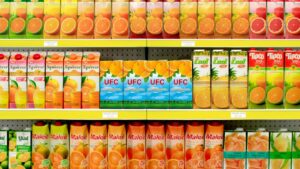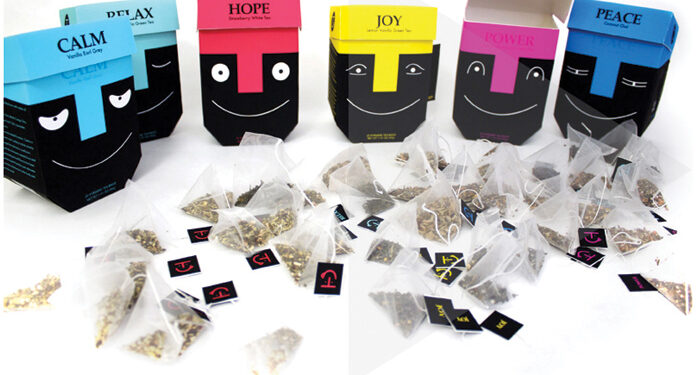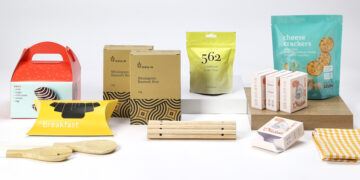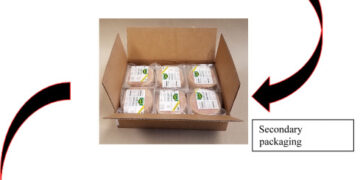Packaging is an essential part of any product marketing strategy. It not only protects the product but also serves as a powerful marketing tool that can help tell a brand story and connect with customers emotionally. In this article, we will explore how to create packaging that tells a brand story and connects with customers emotionally, including the key elements of effective packaging design, how to incorporate storytelling into packaging, and the benefits of emotionally connected packaging.
Key Elements of Effective Packaging Design
Effective packaging design is a critical aspect of creating packaging that tells a brand story and connects with customers emotionally. Some of the key elements of effective packaging design include:

- Clear Branding: Effective packaging design should incorporate clear and consistent branding elements such as logos, colors, and fonts that help customers quickly identify the brand.
- Product Visibility: Packaging design should showcase the product and its features clearly, allowing customers to see what they are buying.
- Functional Design: Packaging design should be functional and practical, providing adequate protection for the product, as well as ease of use and storage.
- Sustainability: Packaging design should also be environmentally friendly, incorporating sustainable materials and practices that align with the brand’s values and beliefs.
Incorporating Storytelling into Packaging
Storytelling is a powerful way to connect with customers emotionally and create packaging that tells a brand story. When incorporating storytelling into packaging, there are several key elements to consider:
- Identify the Brand Story: The first step to incorporating storytelling into packaging is to identify the brand story and the key messages that the brand wants to communicate to customers.
- Choose the Right Packaging: The packaging design should align with the brand story and the key messages that the brand wants to communicate to customers. For example, if the brand story is about sustainability, the packaging design should incorporate sustainable materials and practices.
- Use Visuals and Graphics: Visuals and graphics are powerful tools for storytelling through packaging. They can help communicate the brand story and convey emotions and feelings that connect with customers emotionally.
- Incorporate Text: Text is another powerful tool for storytelling through packaging. It can help communicate the brand story and provide customers with additional information about the product and its features.
Benefits of Emotionally Connected Packaging
Emotionally connected packaging can provide a range of benefits for brands, including:
- Increased Customer Loyalty: Packaging that connects with customers emotionally can help build brand loyalty and increase customer retention.
- Improved Brand Perception: Emotionally connected packaging can help improve brand perception and create a positive brand image in the minds of customers.
- Enhanced Customer Experience: Packaging that tells a brand story and connects with customers emotionally can enhance the overall customer experience, making customers feel more engaged with the brand.
- Increased Sales: Emotionally connected packaging can also help increase sales by capturing the attention of customers and creating a memorable and meaningful experience that encourages them to purchase the product

When it comes to emotionally connected packaging, it is important to keep in mind that different brands will have different stories to tell and different emotions to evoke. However, there are some general principles that can be applied to all brands when creating packaging that connects with customers emotionally.
Firstly, it is important to understand the target audience for the product and to create packaging that speaks directly to their needs, preferences, and values. This may involve conducting market research to better understand the target audience and their motivations for purchasing the product.
Secondly, it is important to use packaging design to create a sense of excitement, anticipation, or desire for the product. This can be achieved through the use of bold colours, striking graphics, or unique packaging shapes that capture the attention of customers and make the product stand out on the shelf.
Thirdly, incorporating storytelling into packaging can be a powerful way to create emotional connections with customers. This may involve using visual and graphic elements to tell a brand story or using text to provide additional information about the product, its features, and its benefits.
Finally, it is important to create packaging that aligns with the brand’s values and beliefs. This may involve using sustainable materials and practices to create environmentally friendly packaging, or incorporating messaging and graphics that communicate the brand’s commitment to social responsibility, diversity, or other important issues.
It is also important to note that emotionally connected packaging can have a significant impact on customer behaviour. Studies have shown that packaging design can influence customer purchasing decisions, with customers more likely to buy products that have visually appealing and emotionally compelling packaging. Additionally, emotionally connected packaging can help build brand loyalty and enhance the overall customer experience, leading to repeat purchases and positive word-of-mouth recommendations.
Furthermore, emotionally connected packaging can also help brands differentiate themselves from their competitors. In today’s crowded marketplace, it can be challenging for brands to stand out and capture the attention of customers. However, by creating packaging that tells a brand story and connects with customers emotionally, brands can create a unique and memorable experience that sets them apart from their competitors and helps them build a loyal customer base.
Finally, it is important to remember that emotionally connected packaging is not a one-time effort, but rather an ongoing process that requires constant attention and innovation. As customer preferences and values evolve, brands must continue to adapt their packaging design and messaging to stay relevant and engaging. By staying attuned to customer needs and preferences, and by continuously innovating and refining their packaging design, brands can create emotionally connected packaging that truly resonates with customers and tells a compelling brand story.
In conclusion, creating packaging that tells a brand story and connects with customers emotionally is a critical aspect of any product marketing strategy. By incorporating key elements of effective packaging design, incorporating storytelling into packaging, and creating emotionally connected packaging that aligns with the brand’s values and beliefs, brands can build customer loyalty, improve brand perception, enhance the customer experience, and increase sales. With these strategies in mind, brands can create packaging that not only protects the product but also serves as a powerful marketing tool that connects with customers emotionally and tells a brand story.

















